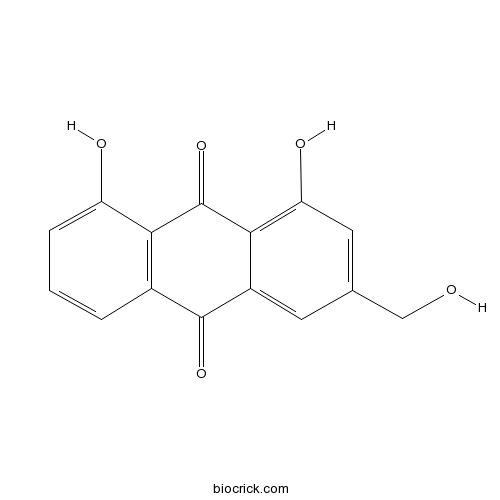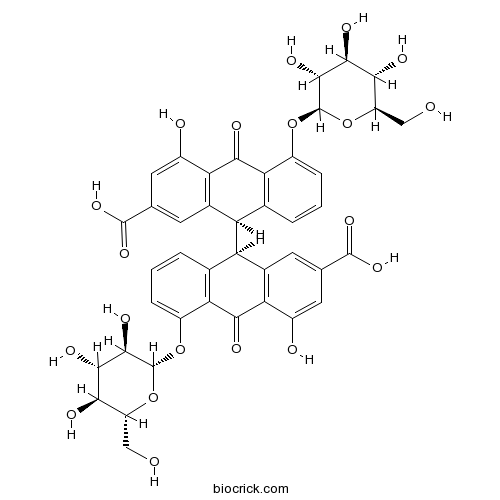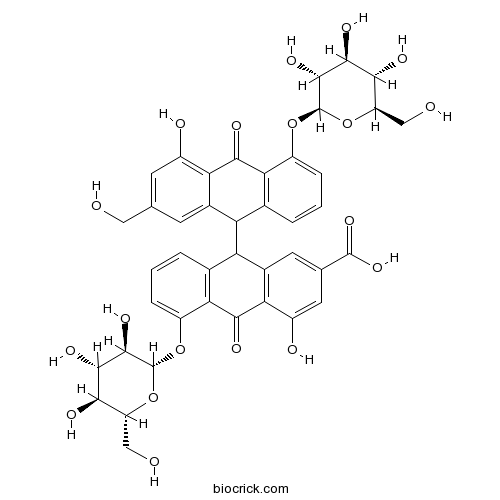Rheum officinale L.
Rheum officinale L.
Rheum officinale is a rhubarb from the family Polygonaceae originating in Asia. Herbs large, 1.5-2 m tall. Rhizomes and roots stout. Stem stout, hollow, finely sulcate, with white hairs, especially above and at nodes. The root and stem of R. officinale are used to treat constipation, as well as to aid in the dissolution of blood clots and pus eruptions. Is used in traditional Chinese medicine, where it is called yao yong da huang, and is also a component in the North American herbal remedy called Essiac tea. In modern medicine, R. officinale has been found to be useful in treatment of Hepatitis B. Anthranoids, especially anthraquinone glycosides: rhein (sennosides A and B), aloe-emodin, physcion. Oxalic acid. Tannins (5% - 10%): gallotannin, catechin, procyanidin. Other: pectin, phenolic carboxylic acids. Pectin tends to be antidiarrheal. In conjunction with tannins, its effect may supersede the effect of anthraquinones when rhubarb is given is small doses.
Products from Rheum officinale L.
- Cat.No. Product Name CAS Number COA
-
BCN1668
Gallic acid 149-91-7
PDF

-
BCN5947
Rhein 478-43-3
PDF

-
BCN5649
Emodin 518-82-1
PDF

-
BCN5663
Physcion 521-61-9
PDF

-
BCN5567
Chrysophanol 481-74-3
PDF

-
BCN5565
Aloeemodin 481-72-1
PDF

-
BCN6329
Emodin-8-beta-D-glucoside 23313-21-5
PDF

-
BCN6349
Rhein-8-glucoside calcium salt 113443-70-2
PDF

-
BCN5392
Rhaponiticin 155-58-8
PDF

-
BCN6354
Sennidin A 641-12-3
PDF

-
BCN6355
Sennidin B 517-44-2
PDF

-
BCN1002
Sennoside A 81-27-6
PDF

-
BCN1003
Sennoside B 128-57-4
PDF

-
BCN1004
Sennoside C 37271-16-2
PDF

-
BCN1005
Sennoside D 37271-17-3
PDF

-
BCN1688
Catechin 154-23-4
PDF

-
BCN5069
Torachrysone 22649-04-3
PDF

-
BCN4181
Torachrysone 8-O-glucoside 64032-49-1
PDF

-
BCN2338
1,2,3,4,6-O-Pentagalloylglucose 14937-32-7
PDF




